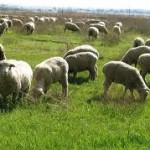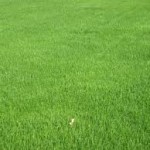Grass will be greener as British scientists predict that in this century new technology will result in better, greener and more nutritious grass that benefit the world’s farming community and those who use their products.
It will also ensure increased efficiency in the cultivation and management of pasture and in the way grass is used, say experts at the United Kingdom’s Institute of Grassland and Environment Research (IGER) in Wales.
Their research program comprises integrated interdisciplinary projects that include developing and applying the technique of molecular genetics and cytogenetics to the development of new crop varieties.
The continuous program of plant improvement and crop breeding carried out there aims to generate new and better quality grass, forage, legume and oat varieties that have higher yields and greater resistance to pests, diseases and stress factors that might limit growth.
IGER researcher carried out their experiments in the institute’s extensive greenhouses. There are also field plots where further plant breeding work is performed.
The experimental farms are also used for projects aimed at modifying agricultural practice to reduce expenditure on inputs such as inorganic fertilizer.
One project is centered around increasing diversity of ruminants such as dairy and meat of cows and sheep, the chemistry and microbiology of silage production forms an important part of their research activities, as does nutrient cycling, agro-ecology, grazing behavior and management in farm wastes.
As the UK’s major center for independent research into grassland and the environment, IGER is also concerned with the leisure industry and is looking for ways to produce better sports turf for games such as football, golf and cricket, through grass breeding, plant physiology and pathology.
A valuable world resource at IGER is the gene bank that has been built up for posterity. It provides for both the present and the future, the maximum possible diversity of temperate grassland species for pure and applied research and education.
It also helps breeders respond to change when technological advances or changes in breeding objectives necessitate access to a broader range of diversity.

